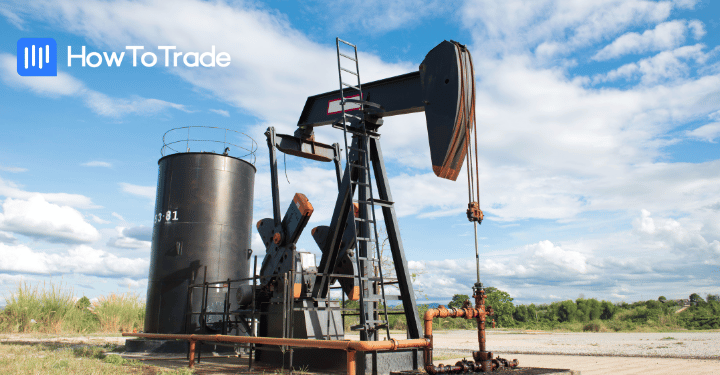
- Copper prices have been on an upward trend since the beginning of the year, with a YTD of nearly 15%, and a YoY return of nearly 25%.
- For copper, the rise of AI is a primary long-term bullish market driver.
- Copper is also set to play a pivotal role in the transition to clean energy.
- Given the technical outlook, it’s difficult to know where the CU market may top out; However, it’s likely that $5.00 becomes the next target.
Copper (CU) is known globally as a measuring stick of economic health. Why? One word: versatility. Copper boasts a wide array of manufacturing applications, ranging from green energy to artificial intelligence (AI). Its conductivity and malleability ensure a robust industrial demand. That’s why it’s an economic barometer; when growth is strong, demand is high.
With 2025 right around the corner, there is a collection of factors that can drive copper prices higher. The expansion of AI and green energy, as well as the restart of international quantitative easing, all boost demand projections. Production disruptions and supply chain issues are also potential bullish market drivers.
For copper traders and investors, these fundamentals will dictate the market dynamic moving forward. Let’s break down a few of these issues and examine the technical outlook facing future pricing.
The Impact Of Artificial Intelligence (AI)
The onset of artificial intelligence has raised numerous questions about the sustainability of the fledgling industry. One of the biggest concerns for the copper market is meeting the electricity requirements of AI operations. Another vital issue is securing the raw materials necessary for building massive data centers. In either case, traders are attempting to get ahead of the forthcoming AI boom.
May of 2024 was a prime example of AI’s potential market impact. Amid a series of AI evolutions and media coverage, energy players aggressively priced the electrical question. Natural gas quickly became the favorite target for bidders, as evidenced by a 27% monthly price jump. At that time, the markets believed natural gas was to fuel the future of AI.
Copper was another beneficiary of spring 2024’s AI hysteria, along with Iron Ore, as it was to be an essential part of the new technology infrastructure. The red metal features the highest electrical conductivity of any non-precious metal, second only to silver in terms of conductivity. Given this attribute, copper will likely be the number one conductor used to build AI data centers and power grids.
According to commodity trading company Trafigura, AI could add 1 million tons to annual copper demand by 2030. This is on top of a projected 4-5 million ton 2030 deficit.
During the spring of 2024, copper mirrored the price action of natural gas. From 1 March to 31 May, copper rallied from beneath $4.00 to $4.60, a gain of 15%. At one point, prices tested the waters above $5 per pound for the first time in history.
For copper, the rise of AI is a primary long-term bullish market driver.
Green Energy
Much like AI, the proliferation of green energy sources is reliant on conductors. In fact, the amount of copper needed to build one electrical vehicle (EV) is nearly three times that of a conventional car. An average EV requires upwards of 132 pounds of copper, compared to only 52 pounds for a typical gas-powered car.
Windmills are another facet of green energy that requires a tremendous amount of copper. A single wind turbine is constructed of a staggering 4.7 tons of copper. An entire wind farm, such as the 7,000-turbine Jiuquan Wind Power Base (China), requires immense copper resources to build and maintain.
Without question, the transition to green energy assets like EVs and wind farms is a long-term bullish market driver for copper. However, this transition depends on politics and geopolitics. In the US, POTUS Joe Biden has signed an executive order that requires ½ of all vehicles sold in the US to be electric by 2030. In addition, the Biden-Harris Administration approved their 10th offshore wind project in three and a half years in office.
A victory by Democrat Nominee Kamala Harris in the 2024 Presidential Election will further EV policy and wind projects. Considering these two areas alone, green energy-driven copper demand is positioned to spike under a Harris administration.
Rate Cuts And Stimulus To Drive Conventional Demand?
Conventional wisdom tells us that commodities are priced according to supply and demand. For copper, the tech-driven aspects of demand are strong. Also, traditional demand drivers have the potential to become much more substantial.
Fed rate cuts and Chinese stimulus measures are two ways financial influences may drive copper demand. In America, the US Federal Reserve instituted a ½ point rate cut in September 2024. This was the first rate reduction since the COVID-19 panic and wouldn’t be the last. At the September meeting, Fed Dot Plot showed that the US Federal Funds Rate was likely to be beneath 3% by 2026. This represented a major shift in policy, slashing rates from above 5% in under 24 months.
In China, the decision to launch a large-scale stimulus program brought optimism to the domestic economy. Announcements of rate cuts, relaxed bank reserve requirements, and upwards of $300 billion in direct capital injections promised to boost the lagging Chinese demand and the Chinese economy.
Interest rate cuts and stimulus from the side of central banks and governments are designed to promote economic growth. Manufacturing and construction sectors are likely to benefit since these sectors consume vast amounts of copper. Given these monetary policy moves from the US Fed and China, the commitment to economic growth ensures conventional demand for copper will remain solid if not expand.
Supply
On the supply front, the copper industry has been faced with many production and logistics challenges. These issues, notwithstanding geopolitical challenges, have many metals analysts predicting shortages. Estimates show that by 2030, global copper mines will only be able to produce 80% of the world’s requirements.
Many factors play into this shortfall. Among the largest are long production lead times and the falling quality of copper ore grades. One of the most significant contributors to a potential shortage is the geographic concentration of copper mines. Chile, Peru, Congo, China, and the United States are leading copper producers.
Any political or geopolitical disruptions in these regions can severely derail output. Trade wars, kinetic wars, or new environmental regulations may all threaten the copper supply.
Assuming the market drivers outlined above are accurate, the copper industry will be under immense pressure to meet requirements. Ultimately, the supply/demand dynamic is heavily skewed to the demand side of the equation. This is a premier bullish market driver for CU.
Estimates show that by 2030, global copper mines will only be able to produce 80% of the world’s requirements. Ultimately, the supply/demand dynamic is heavily skewed to the demand side of the equation. This is a premier bullish market driver for CU.
Copper (XCU/USD): Technical Outlook
Technically, copper (XCU/USD) is already in a bull market. Values are up 15.75% for 2024, posting an all-time high above $5.00 in May.

The fundamental outlook for copper is bullish. High demand estimates and supply-side questions are poised to move prices higher over the long term. However, traders are well advised to know the critical supply zones around $4.75 and $5.00. These are vital technical areas that are capable intermediate-term ceilings.
A trading plan for copper forecast that involves short scalps below $4.75 and $5.00 is a solid place to begin trading copper. In addition, bids from the $4.00 – $3.75 supply zone can offer ideal bullish entries for the expected rally.
So, how high can copper go? Chances are, CU takes out the $5.00 threshold as monetary policy goes dovish and the AI boom hits its stride. Given the technical outlook, it’s difficult to know where the CU market may top out. However, it’s likely that $5.00 becomes a long-term floor, not the ceiling, of this market.
Do You Want To Trade Copper?
Copper can be traded in many ways. You can purchase the physical metal or electronic contracts. Most traders elect to deal in the electronic realm, trading copper futures or contract-for-difference (CFD) products.
Copper futures and CFDs allow traders to trade on leverage and capitalize on market volatility. For more information on opening a copper trading account, contact the financial pros at Switchmarkets.com.
Risk Disclosure: The information provided in this article is not intended to give financial advice, recommend investments, guarantee profits, or shield you from losses. Our content is only for informational purposes and to help you understand the risks and complexity of these markets by providing objective analysis. Before trading, carefully consider your experience, financial goals, and risk tolerance. Trading involves significant potential for financial loss and isn't suitable for everyone.





